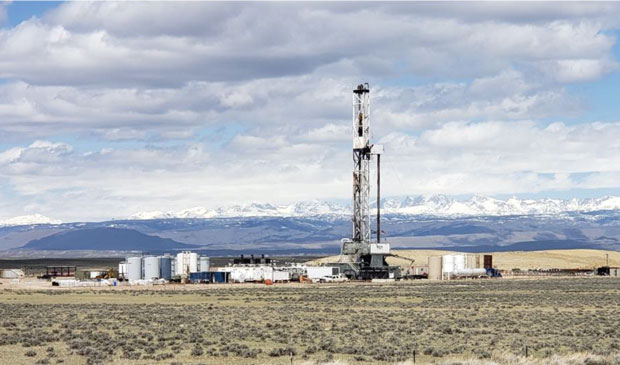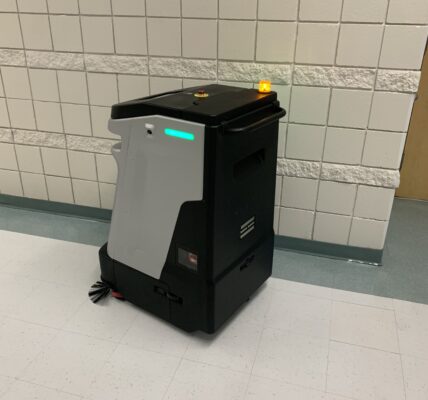
By Zak Sonntag
Casper Star-Tribune
Via- Wyoming News Exchange
CASPER — The Environmental Protection Agency last week finalized a new rule that aims to vastly curtail emissions from methane — a so-called “climate super-polluter” — by requiring the oil and gas industry to implement new detection and containment technology while minimizing wasteful flaring.
The announcement arrived in tandem with declarations from other nations during this week’s COP28 climate summit in Dubai, where a broad contingent of global leaders pledged action on methane reduction. It’s the latest in what’s seen as the Biden Administration’s back-and-forth climate policy.
The methane rule is celebrated by the same environmental groups that lamented the president’s approval of new drilling leases in Alaska and the surge in domestic oil production.
The rule will have outsized implications for energy states like Wyoming, where there are more than 27,000 oil and gas wells in operation, many of which could see operating costs increase as a result — especially small, marginal wells that make up a sizable portion of Wyoming’s production.
Roughly one-third of Wyoming’s oil comes from 300 different companies, each producing 2% or less of the state’s overall production. These small operators are liable to take a financial hit under the new rule, according to Petroleum Association of Wyoming Vice President and Director of Communications Ryan McConnaughey.
“We fear these new rules will be very complicated and overly burdensome for those small individual operators in particular,” said McConnaughey, expressing concern that the rules could put some wells out of service entirely. “Without that collaborative effort from the EPA, there really just will be no choice to work with those operators to reduce emissions while still keeping them in business.”
Public officials lament that the rule resulted from what they described as an exclusionary decision-making process, reflecting a bigger pattern of communication breakdown between the Wyoming and federal agencies.
“From the outset of the proposed rule, the EPA did little to meaningfully consult with the state environmental agencies who actually regulate the oil and gas industry,” Gov. Mark Gordon said in a Monday statement.
Gordon argued the rule will add expenses to consumers, and that “DC is attempting to fix a problem that is already being addressed…The EPA adds a heavy-handed federal layer with marginal environmental benefits compared to the increased costs.”
Gordon’s statements, however, run counter to research showing that small wells, like the many in Wyoming, have disproportionately low economic output compared to their environmental impacts, as shown in peer-reviewed studies from the journal Nature Communications.
“Those older, more marginal wells have a disproportionately large amount of leakage relative to the volume of oil they’re producing. So it makes sense that those are wells we’d want to repair first. They have a really big negative impact relative to the very small benefit in terms of fuel production on the whole,” said John Burrows, policy director with the Wyoming Outdoor Council, a conservation group that advocated for methane reform.
This was the logic behind the Biden Administration’s offer of up to $5 million for Wyoming to retire old “stripper” wells, part of the administration’s Methane Emissions Reduction Program. Gov. Gordon rejected the money.
But the rule’s supporters say the action is needed to protect locals against the negative health effects from living near leaky wells, as a growing body of research connects oil and gas wells to adverse health outcomes for proximal communities.
Researchers from Boston University, for instance, last year quantified negative health effects from living in proximity to oil and gas operations. Exposure to methane and other volatile organic compounds, like nitrogen, ozone and fine particulates, lead to higher rates of respiratory and cardiovascular hospitalization and childhood asthma, the study said. As many as 6% of Wyomingites live within a mile of an oil or gas well.
“Wyoming does have significant impacts when you look at that per-capita basis, in terms of things like childhood asthma,” Jon Goldstein, senior director of regulatory and legislative affairs at the Environmental Defense Fund, said of the study when speaking with the Star-Tribune last year.
For this reason, the rule was welcomed by some constituencies.
“Cutting methane pollution from the oil and gas industry is recognized as the quickest and most cost-effective way to slow the rate of climate change and protect public health,” said the Powder River Basin Resource Council, a Wyoming non-profit, in a statement. “Reducing these emissions will ensure a healthier future for communities across the nation.”
Methane is believed responsible for as much as a quarter of anthropogenic warming and has long been a target for environmental policy makers.
The rule is two years and more than 1 million public comments in the making, and EPA officials say its implementation will reduce the climate-equivalent of 28 million gasoline cars from the atmosphere.
The rule promotes the use of advanced technologies such as aerial screening, sensor networks, and satellites to help operators find and fix leaks more quickly. It gives states two years to draft a plan, and another three years to fully implement it – though some operators in Wyoming are already at work on methane controls.
PureWest Energy, one of the state’s biggest operators with 3,500 wells in the Upper Green River Basin, has practice controlling for leakage because of a 2008 BLM-Wyoming Record of Decision as well as ozone nonattainment standards, which compelled leases’ to control for certain forms of air pollution.
“As a result of all of the VOC mitigation that we’ve done both for compliance and voluntarily, we were able to really put ourselves ahead of the curve when it comes to greenhouse gasses like methane as well, and it puts us at an advantage,” said Kelly Bott, senior vice president of corporate affairs at PureWest Energy, who explained the company is currently working with Colorado State University to pilot new emissions measurement and control technologies.
A major focal point in the new rule is use of pneumatic instruments, which help control pressure imbalances in the extraction process, but also “bleed” gasses like methane into the atmosphere.
“I think pneumatic controllers for our industry by and large are going to be the biggest project that we’re all having to tackle,” Bott said.
McConnaughey says additional examples of production in the Upper Green River Basin is an example of Wyoming’s ability to responsibly manage emissions without new federal government rules.
The rule is also designed to help save — and profit — on gas that’s typically wasted. For instance, studies have indicated that as much as $500 million worth of gas is lost to leakage and other factors each year. By reducing wasteful leaks and other releases, the EPA says the new rule will save about 400 billion cubic feet of valuable fuel each year.
“Eliminating methane waste is the low hanging fruit because taking care of the leaks that we see across oil and gas infrastructure, just like taking care of the leaks that you would deal with in your house for energy efficiency, makes sense. And in a lot of cases those are tax dollars that we’re just venting off into the sky,” said Burrows.
On the other hand, under the rule, “state agencies will incur significant costs to meet compliance requirements,” the Wyoming Department of Environmental Quality said in a statement.




